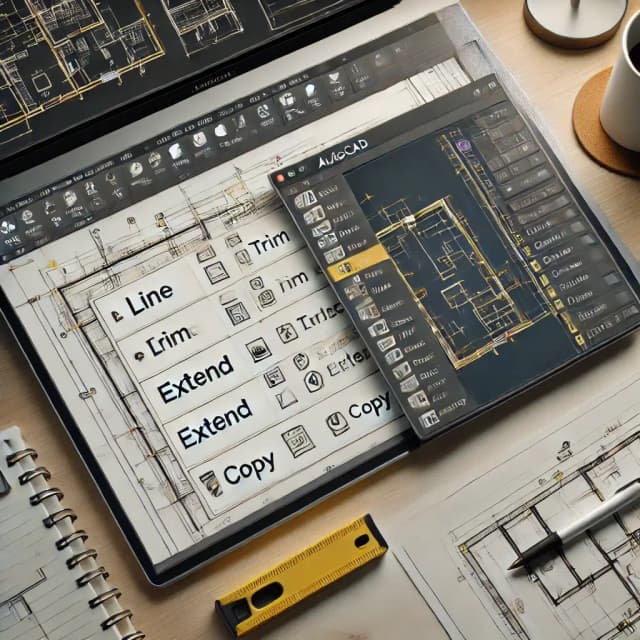engineering design
cad tools
AutoCAD File Management: Complete Guide to Backup and Recovery

In This Post
Introduction
AutoCAD is a powerful drafting tool, but losing your work due to a computer crash or accidental file deletion can be an absolute nightmare.
Managing AutoCAD files can be a daunting task, especially when you're not sure where your backup files are saved or how to recover lost data.
In this complete guide to AutoCAD file management, we'll walk you through everything you need to know about backing up and recovering your files.
What You'll Learn
You'll learn how to:
This guide is for anyone who uses AutoCAD, regardless of your experience level. Whether you're a new user just starting out or an experienced pro, you'll find something valuable in this guide.
Key Topics We'll Cover
-
Determine the default AutoCAD backup file location
Learn where to find your backup files so you can access them when needed.
Having a reliable backup system is crucial for preventing data loss in case of a system failure or accidental file deletion.
-
Configure automatic backup settings
Set up AutoCAD to automatically create backups at regular intervals.
Automating backups ensures your work is continuously protected without manual intervention, giving you peace of mind.
-
Recover AutoCAD files from a corrupt hard drive
Learn techniques to retrieve files from a damaged storage device.
In the unfortunate event of hard drive failure, it's essential to know how to recover your valuable AutoCAD designs.
-
Restore deleted AutoCAD files from a network drive
Understand the process of recovering deleted files stored on a shared network drive.
Accidental file deletion can happen to anyone, and knowing how to restore lost files from a network drive is crucial for collaborative work environments.
Learn where to find your backup files so you can access them when needed.
Having a reliable backup system is crucial for preventing data loss in case of a system failure or accidental file deletion.Set up AutoCAD to automatically create backups at regular intervals.
Automating backups ensures your work is continuously protected without manual intervention, giving you peace of mind.Learn techniques to retrieve files from a damaged storage device.
In the unfortunate event of hard drive failure, it's essential to know how to recover your valuable AutoCAD designs.Understand the process of recovering deleted files stored on a shared network drive.
Accidental file deletion can happen to anyone, and knowing how to restore lost files from a network drive is crucial for collaborative work environments.AutoCAD is the industry-leading drafting software, used by over 10 million professionals worldwide.
Mastering AutoCAD file management can take some time and practice, but this guide will provide you with a solid foundation.
Having a strong understanding of AutoCAD file management demonstrates your professionalism and prepares you for success in your career.
Getting Started
Mastering AutoCAD file management is crucial for any designer or engineer working with CAD software. Properly backing up and recovering AutoCAD files ensures the security and accessibility of your valuable designs.
AutoCAD File Backup Methods
AutoCAD offers two primary backup options: manual and automatic. Manual backup involves periodically saving a copy of your drawing file to a separate location. In contrast, automatic backup utilizes AutoCAD's built-in feature to create incremental backups at specified intervals.
- Manual Backup: This method provides complete control over the backup process, allowing you to choose the backup location and frequency.
- Automatic Backup: Ideal for ensuring regular backups, this feature automatically creates backup files in a designated location at predefined intervals.
Choosing AutoCAD Backup Location
Selecting an appropriate backup location is crucial. Consider a separate hard drive, a network drive, or a cloud storage service. Cloud storage provides remote access and off-site disaster recovery, while network drives offer centralized storage and easy sharing within a team.
AutoCAD File Recovery Methods
File recovery in AutoCAD involves restoring lost or damaged drawings. AutoCAD's built-in recovery tools enable you to recover unsaved changes or retrieve corrupted files. Additionally, external data recovery software can assist in recovering lost files from storage devices.
- AutoCAD's Recovery Tools: These tools allow you to restore unsaved changes and recover corrupted files within the AutoCAD environment.
- External Data Recovery Software: Specialized software can help recover lost files from storage devices, including deleted or overwritten files.
AutoCAD Autosave Feature
AutoCAD's autosave feature provides an additional layer of protection by automatically saving your work at regular intervals. This feature helps minimize data loss in case of unexpected system crashes or power outages. To enable autosave, go to the Options dialog box and adjust the autosave settings.
AutoCAD Backup and Recovery Best Practices
Implementing best practices for AutoCAD backup and recovery is essential for maintaining data integrity and minimizing risks. These practices include regular backups, testing backups, and maintaining multiple backup copies.
- Regular Backups: Perform backups frequently to ensure minimal data loss in case of file corruption or system failure.
- Test Backups: Regularly restore backups to verify their integrity and ensure they can be recovered successfully.
- Multiple Backup Copies: Keep multiple backup copies in different locations to protect against data loss due to hardware failure or disasters.
Additional Tips for AutoCAD File Management
Beyond backup and recovery, proper AutoCAD file management involves organizing files effectively, using descriptive file names, and implementing version control. These practices enhance productivity and collaboration among team members.
- File Organization: Establish a logical file structure to easily locate and retrieve drawings.
- Descriptive File Names: Use descriptive file names that clearly identify the drawing's content.
- Version Control: Implement a version control system to track changes and manage different versions of drawings.
Conclusion
Effective AutoCAD file management involves regular backups to ensure data security. Utilize AutoCAD's Autosave feature, set up automatic backups, and consider cloud storage services for added protection. Knowing where AutoCAD backup files are saved (typically in the user-specified location or default directory) and understanding how to recover AutoCAD files from backups is crucial.
This guide has provided a comprehensive understanding of AutoCAD file management, empowering you to protect your valuable designs and minimize data loss risks.
Implement these strategies to safeguard your AutoCAD files, ensuring seamless project continuation and collaboration.
Next Steps
1. Review the backup settings in your AutoCAD software and configure automatic backups accordingly. 2. Explore cloud storage options like Dropbox or Google Drive to enhance data accessibility and remote collaboration. 3. Share this knowledge with your colleagues to promote best practices in AutoCAD file management.
1. Practice creating manual backups of your AutoCAD files regularly. 2. Experiment with different backup locations, including network drives or external hard drives.
Looking Ahead
Mastering AutoCAD file management is a stepping stone towards becoming a proficient AutoCAD user and enhancing your productivity. It lays the foundation for advanced collaboration, project management, and data security in your AutoCAD workflow.
As the industry embraces digital transformation, the demand for professionals skilled in AutoCAD and proficient in data management will continue to rise.
Keep exploring, keep learning, and stay connected with the AutoCAD community. Your dedication to mastering AutoCAD file management will pay dividends in the long run, ensuring your success in the field.












